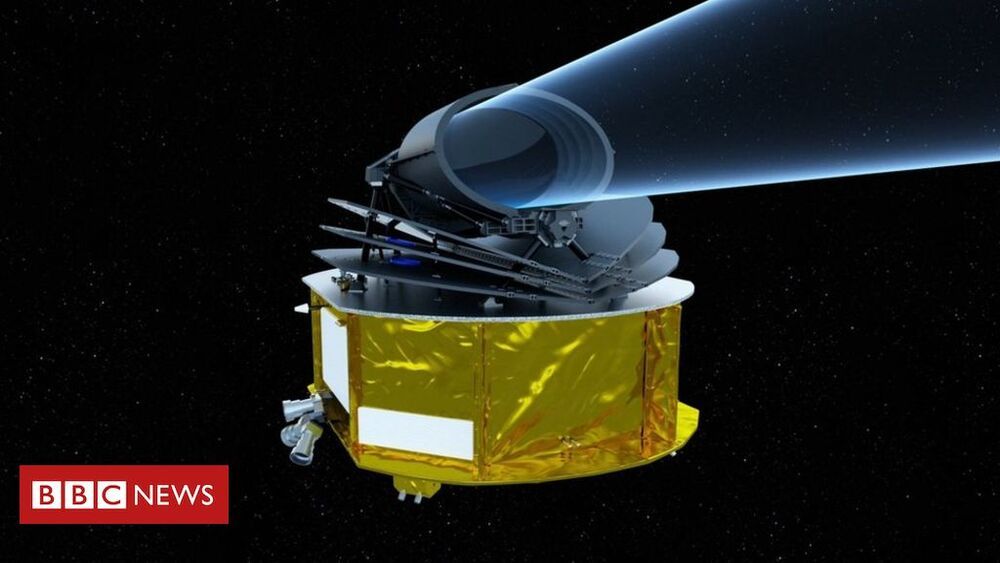Get ready to dive into the Virtual Cave Worlds next Tuesday 11/17. Watch as 16 teams navigate the virtual environments with natural terrain and dynamic rock falls — all from the comfort of your home! www.subtchallenge.com.
Get the latest international news and world events from around the world.
Video Friday: Aquanaut Robot Takes to the Ocean
Your weekly selection of awesome robot videos.
Kawasaki’s K-Racer helicopter targets high speeds with H2R motor
It’s easy to forget that Kawasaki is much more than a motorcycle company. While its famously crazy motorcycles are certainly the most visible part of the brand outside Japan, Kawasaki Heavy Industries is a 124-year-old industrial colossus that brought in US$15 billion in revenues last year. Only $3.2 billion of that came from the motorcycle and engine division – a further $2.5 billion came in from energy systems and plant engineering, and $2.2 billion from precision machines and robotics.
The largest segment of the Kawasaki empire, contributing $4.6 billion, is its aerospace systems division. Kawasaki makes a small range of military and civilian helicopters, as well as large turbofan engines for various Airbus and Boeing airliners.
So this new K-Racer design is well within the company’s wheelhouse. The K-Racer is an unmanned compound helicopter – compound referring to the fact that it uses multiple propulsion systems. Its 4-m (13.1-ft) top rotor looks much like the one on any large helicopter, and it’s clearly capable of modifying the angle of its blades as they rotate around the central shaft to give it omnidirectional tilt and movement capabilities.

East African Rift System is slowly breaking away, with Madagascar splitting into pieces
The African continent is slowly separating into several large and small tectonic blocks along the diverging East African Rift System, continuing to Madagascar—the long island just off the coast of Southeast Africa—that itself will also break apart into smaller islands.
These developments will redefine Africa and the Indian Ocean. The finding comes in a new study by D. Sarah Stamps of the Department of Geosciences for the journal Geology. The breakup is a continuation of the shattering of the supercontinent Pangea some 200 million years ago.
Rest assured, though, this isn’t happening anytime soon.

Jetcopter VTOL to be Revealed at AERO 2019
Circa 2019
A full-scale mock-up of the Jetcopter vertical-takeoff-and-landing concept vehicle will be shown for the first time at April’s AERO 2019 show in Friedrichshafen, Germany.
The startup air taxi’s claim to fame is its powerplant: Dual 500 hp, 6,000 rpm motors — converted from automotive applications — push two 200 cm air turbines. The resulting 600 mph airflow velocity powers the Jetcopter to a claimed top speed of close to 200 mph with a 620-plus-mile range.
The Jetcopter is unusual in that it does not have large rotor blades, like a helicopter, fixed wings, or tiltable turbines distributed to the ends of shafts like other air taxis. Instead, its two turbines are fixed above the cabin and it is engineered to divert the airflow to four endpoints, where the air can be vectored in a chosen direction, helping to direct the aircraft, a la the Harrier Jump Jet.

The World Needs Nuclear Power, And We Shouldn’t Be Afraid Of It
Although many different approaches have been proposed to address this problem, it’s clear that any sustainable, long-term solution will include one important component: a transition to energy sources that don’t result in additional carbon dioxide emissions. While most of the ideas put forth — such as the hypothetical Green New Deal — focus on renewable energy sources like solar and wind power, there’s another option that we should seriously reconsider: nuclear fission power.
As we embrace green solutions, nuclear should absolutely be part of the equation.
The Future of AR
AR has been a bit of a fad in recent days. However, I personally believe that it will be an integral part of our future lives- but in the form of neural implants rather than glasses or contact lenses.
Discord Link: https://discord.gg/brYJDEr
Patreon link: https://www.patreon.com/TheFuturistTom
Please follow our instagram at: https://www.instagram.com/the_futurist_tom
For business inquires, please contact [email protected]

Azerbaijan’s drones owned the battlefield in Nagorno-Karabakh — and showed future of warfare
Drones will rule the battlefield. Until anti drone tech comes up to match it. I was picturing a anti drone system. One system that uses an old school radar anti aircraft gun, also equipped with a set of small missiles like the Iron Dome system, also equipped with some kind of laser weapon, and some kind of electro magnetic EMF weapon. All four in one package, that could engage multiple targets simultaneously. And, this will have to come standard, like SAM systems are now.
Azerbaijan used oil wealth to buy attack drones from Turkey and Israel. It was a huge advantage.
